Off this morning to Albury and we have only been able to get one night at the Big 4 Caravan Park, so one night in Albury it will be. The CP was booked out for the weekend. When we got there, we understood why they were booked out. They only have 10 caravan sites. It was mostly cabins at the park, but they have purchased the property alongside and are expanding. The bay was very tight, but Pete managed to get the caravan in there and for just the one night, it was fine. The camp kitchen was very nice. Because this area is so cold in the winter, the camp kitchens are enclosed and extremely comfortable. It was just 120 kms from Wagga Wagga to Albury. The distance from Melbourne to Albury is 325 kms.
I had made a nice no bake slice yesterday (Heather's recipe), so I popped eight or so slices into a containers and tissed it up a bit, for a present to Dorothy for her birthday. I had also made a cake on Wednesday night, and the plan was to stop somewhere for morning tea and we would have the birthday cake. As it turned out the stop we chose, couldn't have been more perfect. The name of the town was Gerogery. Now we had no idea how it was pronounced, so it became 'Gero Gery' for us. The lady at the shop told us it is pronounced Ger og ery. There was even blue and yellow balloons at the front of the shop. We thought they must have been Eagles supporters! They had actually had a fundraiser for the school on Saturday and when the Eagles won the AFL Cup, they took down the black and white balloons. Gerogery is a very tiny town on the Olympic Highway. We didn't have much further to go before we turned onto the Hume Highway.
Peter had been researching what we could do during our short time in Albury. We didn't get off to a good start though. He thought it would be a good idea to visit Bonegilla and left me to put it in the Sat Nav. Well it didn't like Bonegilla as a town, so I went with Albury. What a disaster! We ended up in the middle of the town at a residential street, with Dorothy and John close behind us. The air in the car was very heated for some time! So the address of the Caravan Park was entered into the Sat Nav and we got ourselves to there, booked in and unhooked. I'm not sure that Pete will agree, that in the end it was the best result, but it was the outcome!
After an early lunch we went to find Bonegilla. I had asked Kerrie at reception where to go. We needed to head out to the Hume Dam and we wanted to visit that anyway. Kerrie also suggested a couple of other places to visit, so we filled the afternoon in well in the end.
The first stop was the Hume Dam. The Hume Dam was hailed, alongside Sydney Harbour Bridge, as one of the mightiest Australian structures of the inter-war years. It was one of the first great inter-government co-operative projects facilitated by Federation. At its peak the work employed 1,000 men. Horses, steam engines and much manual labour was used, including the hand-to-hand passing of rock. The dam's purpose was to assure a never-ending water supply to present and future irrigation districts and to the towns along the Murray, from Albury to the sea and to Adelaide. The dam was constructed over a 17 year period between 1919 and 1936 and had a capacity of 1522 gigalitres. By erecting gates above the dam wall between 1950 and 1961, capacity was inceased to 3038 gigalitres. A hydro-electric power station was added in 1957. The dam is 2,225 kilometres from the mouth of the Murray River and the dam wall is 1,616 metres wide. It is estimated that lake Hume holds five times the volumne of Water in Sydney Harbour.
Next was our visit to Bonegilla which turned out to be the 'Bonegilla Migrant Experience'. Bonegilla was once a settlement with its own Post Office, Hospital, Civic Centre, Theatre and Church. All that remains today is Block 19 of the Bonegilla Migrant Centre. No wonder the Sat Nav didn't want to find it! We could have done a tour, but we were happy for the lady to give us an overview and then leave us to do our own wandering. There was a cost to do the tour, but in all honestly the information she gave us was well and truly adequate.
There were 24 blocks that made up the Bonegilla Migrant Reception and Training Centre, that was established near Wodonga following WWII. The centre was big and at its busiest 8,000 people were housed there. Sometimes it was in tents, but usually in large accommodation huts. Women and children were housed separately to the men, until huts were partitioned into cubicles for families. Migrants came to Melbourne and were then transported on trains known as 'red rattlers' to the Bonegilla siding. Initially the migrants were selected displaced persons from refugee camps in Europe. As the demand for labour increased and Australian immigration officials realised they could not meet the Government's migration quota, the opportunity to migrate was opened up to the assisted migrants.
Although the information provided in a pamphlet we were given paints a very positive picture, it really was not probably so all of the time. These migrants were brought to an isolated part of the country and as the Army had trained in this area during WWII and their presence was still here, they did provide protection, that was not always seen that way by the migrants. Each assisted migrant or displace person signed a contract stating their willingness to work for two years in any job, in any part of Australia. Qualifications, work experience and education were not considered. When your job allocation ran out, you were expected to return to Bonegilla to wait for your next opportunity. There was display panels with information that did leave me feeling confused, but then there was a great deal of positive info scattered throughout the buildings. The brochure said that one in twenty Australians have had either a parent, brother, sister, uncle, aunty or grandparent who spent time at Bonegilla, before work allocations dispersed them Australia wide.
Peter actually said after the visit that he was glad that we had come. He spoke of the Italians that had come to the farm when he was a little fella and they had cleared the 440 and Barkers. The way they had been prepared to live and they way they worked, has had a lasting impression on him. Peter doesn't think they would have initially gone to Bonegilla, but maybe they did. The Centre operated until 1971 and in 2007 Block 19 was included on the National Australia Heritage List.
We travelled back to Albury and up to the Monument Lookout. The 30.48 metre War Memorial is an impressive landmark overlooking the Albury CBD and the view down Dean Street from the lookout is equally impressive. The cost of this District War Memorial was 3,200 pounds when it was constructed of reinforced concrete in 1925. The money was raised by public subscription.
We were also impressed with the parkland in the central CBD. The area is also the Cultural Precinct of Albury, with a large Entertainment Centre overlooking the parkland. In 2016 the population of Albury was 51,076. AlburyWodonga has always been a meeting place of two cities, and two states, across the 'Mighty Murray River'.
Kerrie suggested the Cafe on the Murray River as a nice spot to visit, so we eventually found that. It was too late for a coffee, but we had a wander around. Wherever there is water, people are always attracted to it. This park was named 'Noreuil Park' and the cafe 'River Deck'. The story goes that in 1917, soldiers from the Albury Battery, part of the 5th Brigade fighting in Europe, captured a French village named Noreuil, from the German Army. The park was named as a lasting tribute to the soldiers.
As we left we noticed the unusual naming of a building opposite. It was the named the Flying Fruit Fly Circus. Research has informed me of this story. I love a good story! And the story associated with this building is entitled ...'From Little Things'...It was ever meant to last.
In 1979, deemed the International Year of the Child, ‘new circus’ was in the air, with the contemporary company Circus Oz formed only a year earlier. In Albury, the local and enterprising Murray River Performing Group (MRPG) initiated a children’s holiday program along with a few intrepid circus artists. Together they trained more than 80 school children from the region over a six-week period. A show was developed and performed in a circus big top erected in Hovell Tree Park. Thanks to the ambitious level of circus skills training, the MRPG’s entrepreneurial chutzpah and the exuberant energy of the kids, the show, called The Flying Fruit Fly Circus, was an extraordinary success.
The show’s tongue-in-cheek title was a light-hearted nod to a quarantine station on the Causeway, where people crossing the state border surrendered any fruit they were carrying to help stop the spread of the damaging fruit fly. It caught on and evolved into the now famous and much loved name of our company.
An unstoppable momentum had been generated. A group of young artists called Sidewalk Circus was an early offshoot and performed at the Sydney Festival. The following year a new Fruit Fly show was produced and played to sell-out performances in Albury-Wodonga, on regional tour and eventually overseas in Canada at the Vancouver Children’s Festival, the first of many overseas engagements from Glasgow to Broadway. The Flying Fruit Fly Circus is Australia's world famous National Circus for young people and is the only full-time circuse school for young people between 8 and 18 in Australia.
To conclude our visit to Albury we went to a Hotel just down the street for dinner, celebrating Dorothy's birthday, courtesy of John. It has been a short visit to Albury. We didn't actually go to Wodonga, but our visit has been an enjoyable one and now we know more about these two towns. One on either side of the start of the Murray River. Albury in NSW and Wodonga in Victoria. This was our last stay in a town in NSW for this trip.
While looking through the Albury Wodonga tourism book before I disposed of it, I was surprised to see something on Captain Albert Borella VC, MM, MID. I first found information about Albert Borella in Mataranka in the NT. He was born in Albury NSW and Albury has claimed him too. He has been recognised with a memorial statue that was officially opened in November 2014. He was Albury’s only Victoria Cross recipient. The Memorial is a life-sized bronze statue of the then Lieutenant Albert Borella VC, MM, MID, the Australian flag and a bronze blade engraved with the 100 names of Australia’s Victoria Cross recipients.

 Albury, New South Wales, Australia
Albury, New South Wales, Australia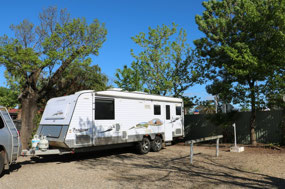

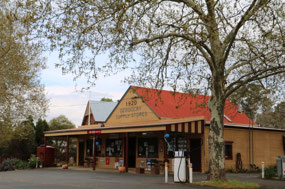
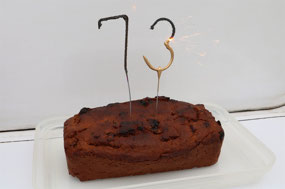
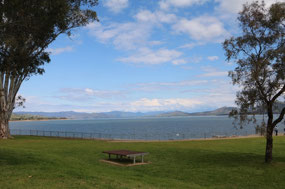
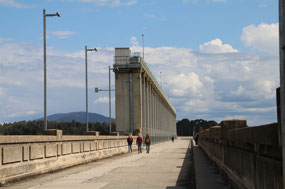
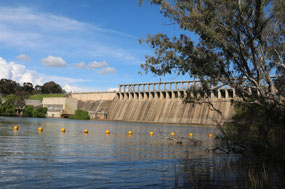
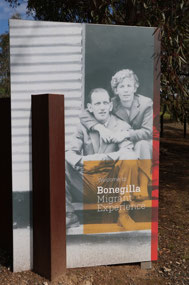
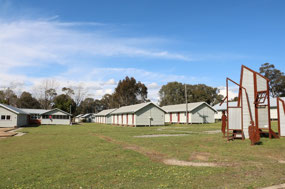
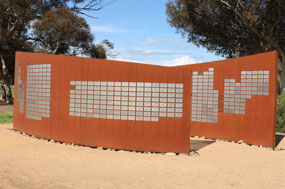
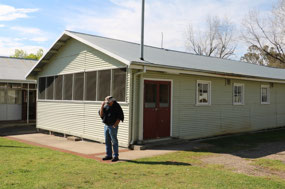
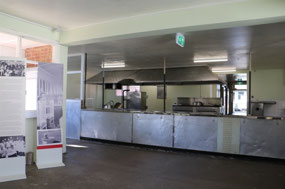
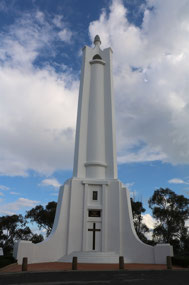

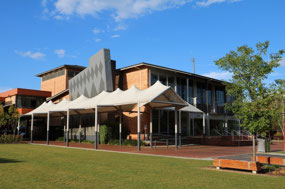
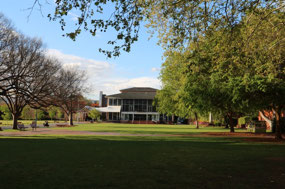
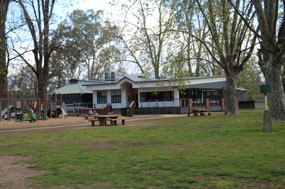
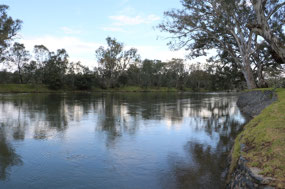
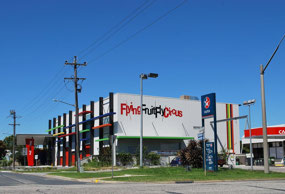
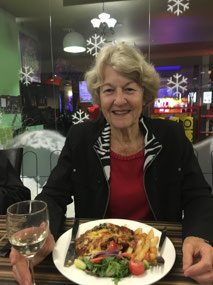
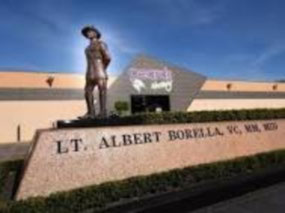

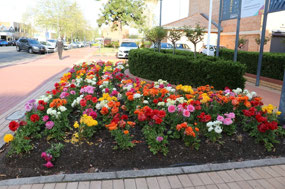
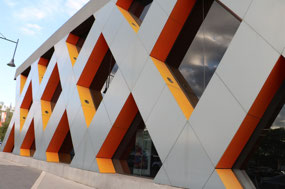
Jenny
2018-10-07
Now I want the recipe for the no bake cake. You know I don't bake if I can get away with it. Looks like Bonegilla was a great place to go to. As for the steam in the cab, I'm sure it wasn't coming from the engine. What's an adventure without a little steam!! As for the Italians during WWII, many were at the Old Gaol in Geraldton along with Japanese and of course some Germans from the HSK Kormoran. ;-)